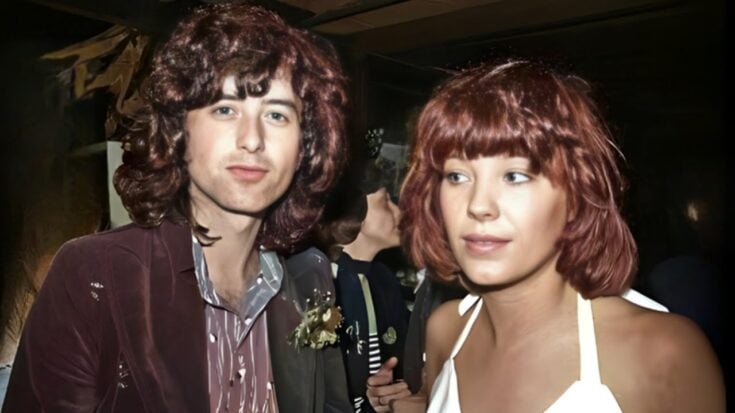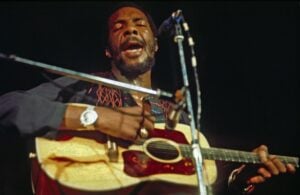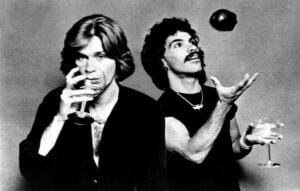The Truth About The 1980s Groupie Lifestyle

via Grunge / Youtube
Being a rock groupie in the 1980s wasn’t only about crazy parties and hookups, though there were a lot of those. For several people, the role was a way to express their freedom, have fun, and be part of something creative. But for some, it showed the bad side of the music world, where women were often treated more like things than people. Still, a lot of groupies have said for a long time that their relationships weren’t merely flings. They formed meaningful connections with the musicians, giving them emotional support, inspiration, and sometimes working together on creative projects.
For example, Connie Hamzy, who is better known as “Sweet, Sweet Connie,” traveled with Van Halen in 1988. She wasn’t just a fan; she was also a member of the crew’s inner circle. Her story, like many others, reveals how messy, exhilarating, and hard life might be behind the scenes. This was the truth about groupies in the glam rock period, when empowerment and exploitation often went hand in hand.
Backstage Fame Came With a Dark Side
Life as a groupie in the 1980s was often painted as thrilling—full of music, parties, and rock stars. Many women spoke fondly about the backstage world, and even KISS frontman Paul Stanley once told Oprah in a 1988 interview that he “worship[s] women.” But not everyone had the same experience. Gene Simmons, also of KISS, bluntly admitted that he got into rock “for access to women,” exposing the double standards baked into the scene.
Despite the fun and freedom, many groupies also faced constant misogyny. Roxana Shirazi, in her memoir The Last Living Sl**, wrote, “A female is not defined in terms of her humanity, but in terms of her sex life.” She pointed out how women were shamed for the same behaviors that earned men praise. In a later interview on the Muses podcast, Shirazi admitted the bias hadn’t gone away: “I want to be rock and roll,” she said, “But sometimes I can’t. I’m not allowed to be.”
Bebe Buell, who moved from groupie to musician herself, was just as direct. “I get really angry at these people who dismiss these girls as wh**** or groupies or crappy labels they want to throw at them. They were more than that,” she told Stay Thirsty.
For Some, It Was More Than Just Sex and Parties
The word “groupie” often brings to mind images of wild nights, rock stars, and a blur of sex, drugs, and music. But that stereotype misses a much deeper reality. If being a groupie was just about partying, the stories of women like Pamela Des Barres wouldn’t have stuck around—and neither would the groupie scene itself. Why would anyone stay in a world that only offered shallow experiences?
The truth is, many didn’t see it that way. While misogyny and snap judgments were real parts of the experience, some groupies actually found something meaningful. A 2014 study in Sexuality & Culture revealed that groupies in the 1980s metal scene not only had wild adventures, but also found artistic purpose and a real sense of belonging. Most even led typical middle-class lives and remembered those years fondly, despite the risks.
That same feeling came through in a ’90s interview with the legendary Connie Hamzy—nicknamed “Sweet, Sweet Connie”—who was famously mentioned in a Grand Funk Railroad song. On The Joan Rivers Show, she pushed back against the idea that her relationships were just about sex. “They’re my dearest friends,” she said. “They’re basically my family.”
Consent Was Often Blurry in the Rock Scene
By the time the 1980s rolled around, groupies were already a big part of rock culture—but the lines around consent were still incredibly messy. Some cases were clearly wrong, especially when teenage girls were pulled into adult situations with older rock stars.
Lori Mattix, a well-known teenage groupie from the 1970s, later admitted she had mixed feelings about those years. “I wouldn’t want this for anybody’s daughter,” she told The Guardian. Roxana Shirazi, another former groupie and author, shared a similar concern. Though she believed she was in control, she admitted, “It’s never possible to have full agency [as a groupie]. From the outset, the power structure is not equal.”
And then there were the stories surrounding Mötley Crüe. Jason Bryce, a photographer’s assistant who briefly toured with the band in 1987, recalled bassist Nikki Sixx telling a groupie, “If you want to hang out with the Crüe, you’ve got to sort my young mate out,” referring to 16-year-old Bryce (The Heroin Diaries). She did—but was that really her choice? Sixx also admitted to sexually assaulting a woman who was too drunk to consent, even dragging drummer Tommy Lee into the incident. Still, he later claimed to Rolling Stone that everything with groupies was “consensual.”
Male Groupies Were Out There—Just Not Many
In the rock world of the 1980s, groupie culture was mostly built around one dynamic: male musicians and female fans. Female artists often pointed out the lack of male groupies, and Susanna Hoffs of The Bangles once noted that when men did make it backstage, it rarely went beyond a little light flirting. Still, there were exceptions—even if they were few and far between.
One standout was Ian Wagner, better known by his nickname “Pleather.” He shared his story with Pamela Des Barres in her book Let’s Spend the Night Together: Backstage Secrets of Rock Muses and Supergroupies. As a kid, Pleather said he didn’t realize that female musicians were the minority in rock. But by his mid-teens in the late ’80s, he became a regular in the scene—touring and spending time with all-female acts like the Pandoras, Screamin’ Sirens, and even Courtney Love.
Like many of his female counterparts, Pleather’s experience was a mixed bag. “I did get treated badly by a lot of them,” he admitted. Still, he didn’t hold a grudge. “There isn’t a single woman that I hold anything against. … It was an honor for me to be around them for the short amount of time I was.”
Drugs Took a Heavy Toll Behind the Scenes
Drugs were often part of the backstage lifestyle in the 1980s, sometimes seen as a way to unwind or get closer to the band. But for many groupies, they came with serious consequences. Chris O’Dell, a well-known groupie, opened up in her memoir Miss O’Dell about how addiction stole years of her life. “Those years were full of darkness and shame brought about by my ever-worsening addiction to alcohol and drugs. I call them my lost years,” she wrote. In a 2009 interview with ABC News, she revealed she finally got clean in 1988 after struggling to quit earlier because of pressure from those around her who accused her of being “boring” without substances.
Unfortunately, not everyone made it out. Christina Frka, better known as “Miss Christine,” died of a drug overdose in 1972 at just 22 years old—a haunting reminder of how far back these tragedies go.
Then there’s Cathy Smith, who had ties to big-name musicians like Gordon Lightfoot. By the 1980s, she had become a drug dealer and was linked to one of the most infamous overdose deaths in Hollywood. In 1982, she gave John Belushi the fatal heroin-cocaine mix that killed him, later pleading no contest to involuntary manslaughter in 1986.
HIV and AIDS Raised Alarms—But Not for Everyone
In the early 1980s, a frightening new illness began to make headlines. At first, many believed HIV and AIDS only affected the LGBTQ community, but as the decade went on, it became obvious that the virus was a danger to everyone. Still, misinformation and stigma stuck around for years, clouding how people saw the disease and who they thought was at risk.
By the mid-’80s, it was well known that HIV could be spread through sex and shared needles. But that didn’t mean everyone in the rock scene took it seriously. In 1988, Gene Simmons casually told Oprah he had been with “upwards of 2,000 women” (via Best Life), showing that for some, concern was still low.
Others, like Ozzy Osbourne, were more aware of the risks. In a 1991 Los Angeles Times interview, he admitted the fear of catching HIV had changed how he behaved. “But in the past I have [messed around],” he said. “We all have. It haunts me.” Even so, Osbourne and others said that some groupies still chased encounters with famous musicians, showing just how far the desire for rock ‘n’ roll connection could go—even in the face of serious risk.
Gender Roles Kept Groupies Out of the Spotlight
Rock and roll in the 1980s liked to brand itself as rebellious and free, but for women—especially groupies—there were still plenty of limits, especially when it came to being taken seriously as creative forces. Even Ian Wagner, better known as “Pleather,” a rare male groupie in that scene, admitted in Pamela Des Barres’ book Let’s Spend the Night Together that his view of his role was shaped by traditional gender ideas. “I’ve subconsciously set up my entire life to take the traditionally feminine role in relationships,” he said. “When I say feminine, I mean the person who is seen as weaker to the outside world, but is really the one making things happen. Women make the world go ’round, but the men take the credit.”
Pleather’s insight hits on a bigger problem: women in the rock world were often seen as fans—not creators. Music insiders, critics, and even artists themselves reinforced that idea. As Gretchen Larsen noted in Organization, this stereotype framed women as consumers of music, not contributors. So, despite being close to the action, many groupies were left on the sidelines, their influence and creativity largely ignored.
Some Groupies Turned Passion Into Creative Careers
While groupies were often dismissed as just part of the party scene, many didn’t let the label define them. Pamela Des Barres, one of the most iconic groupies of the 1970s and ’80s, proudly embraced her role as a muse to rock stars like Keith Moon of The Who. In an interview with Salon, she explained that groupies were more than eye candy—they were “friends, helpers, assistants, [and] guides.”
Some even broke out of the background and took center stage. In 1983, Cherry Vanilla—born Kathleen Dorritie—spoke with Rian Keating about how fulfilling her creative journey had been. She wore many hats: publicist, actress, writer, and musician. Known for her wild days with David Bowie, Cherry later built a name for herself as a performer and promoter, even if, as she admitted, her album sales didn’t exactly soar.
Bebe Buell also made the leap, shifting from modeling and motherhood—she’s Liv Tyler’s mom—to a long-running music career. She even connected creatively with Patti Smith in the early days. And Blondie’s Debbie Harry? She once described herself as a groupie, too—but one who turned that identity into power.
Behind the Glamour, Some Groupies Faced Deep Pain
While groupie life often looked like non-stop fun and freedom, for some, it was a way to escape personal pain and trauma. Take Lori Mattix, a teenage groupie from the ’70s who got involved with much older rock stars while still underage. Though she’s said she gave consent, it raises big questions—especially about her home life. As she told Thrillist, her mother was a single parent who gave Jimmy Page permission to date her teen daughter.
Then there’s Roxana Shirazi, who faced even greater challenges. Born in Iran, she was sent to England at age 10 to escape rising political unrest. But life in 1980s Britain wasn’t easy. She dealt with racism, bullying, and abuse from her stepfather. In her memoir The Last Living Sl**, Shirazi wrote, “People were cold and stilted, and didn’t hug and kiss and laugh as much as Iranians did.” Her family felt cut off from the life they’d known.
That disconnect drove her toward music. “I never drank or did drugs — rock ‘n’ roll was my vice,” she told MetalSucks. “So when my life was too hard for me to handle, I’d seek out bands to make it easier for me.”
Grunge Rock Quieted the Groupie Scene
Throughout the 1980s, the groupie lifestyle seemed alive and well, with backstage access, wild nights, and rockstar romances. But when grunge arrived in the early ’90s, the vibe shifted—and so did the role of groupies.
That doesn’t mean grunge bands didn’t have devoted fans. But the culture was changing. Before Nirvana recorded their 1993 album In Utero, producer Steve Albini advised them to ditch “drugs and groupies,” suggesting that the occasional groupie still popped up (via Louder). While some, like Roxana Shirazi, were still active during that time, a growing conversation around consent and sexual assault may have also cooled the groupie image.
The grunge era brought a more stripped-down, introspective tone that didn’t really match the glamor and excess of the ’80s rock scene. Music journalist John Walters recalled a backstage visit in December 1991 where he expected the usual chaos. Instead, with his sister Lorraine by his side, he saw a surprisingly calm scene—no groupies in sight. Kurt Cobain was eating a bowl of cereal, and his partner, Courtney Love, wasn’t just someone’s plus-one—she was a musician with her own rising career. The times were definitely changing.












